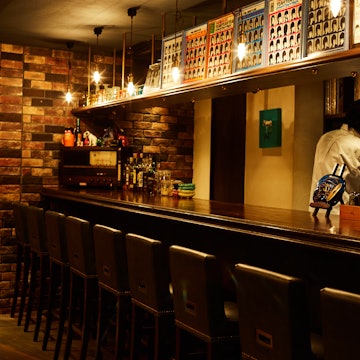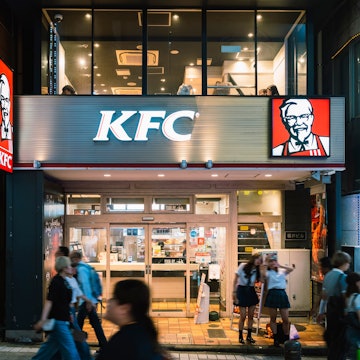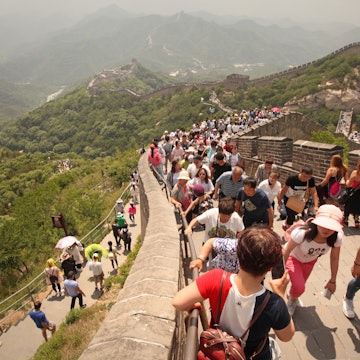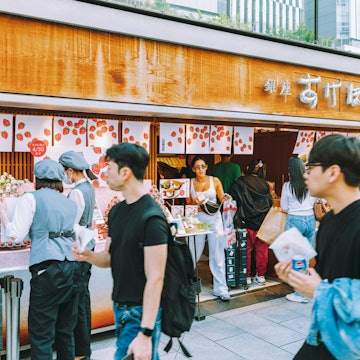
Order food in Japan like a pro with Lonely Planet's new book

Jun 14, 2021 • 5 min read

Food is an absolute obsession in Japan © Wissuta.on / Shutterstock
As visitors to Japan quickly discover, the people here are absolutely obsessed with food. You’ll find that every island and region has its own meibutsu (local speciality) that is a point of pride. Japanese food is playful and diverse, with quirky historical origins and fascinating regional differences. There's also an etiquette associated with eating Japanese cuisine, from giving thanks before you eat to how to use chopsticks.
Lonely Planet’s new book Eat Japan is a complete companion to Japanese food and culture, helping visitors get the most out of their gastronomic experience. From must-try regional specialities to etiquette and essential phrases, this extract from Eat Japan equips you to explore the culture and demystify the food rituals associated with Japanese cuisine.

Japanese food culture
Japanese cuisine is known as washoku, literally meaning "harmony of food". Washoku encompasses the traditional dishes and recipes of Japan – food that nourishes the soul. There’s variety, color, texture and subtlety. There’s the exquisite marriage of form and function, the immaculate presentation. From deep-fried agedashi-nasu eggplants to zosui rice soup, from the succulent fresh salmon of Hokkaido to the fiery, fermented bean curd of Okinawa, from the comforting carbohydrates of a loaded bowl of ramen to the refined and elegant Kyoto high-class kaiseki (Japanese haute-cuisine) – it’s endlessly variable and consistently tempting. All of this hinges on the proper skills and knowledge of Japanese cooking that has been handed down over generations, and is why washoku was added to Unesco’s Intangible Cultural Heritage list in 2013.

At its best, Japanese food is highly seasonal, drawing on fresh local ingredients coaxed into goodness with a light touch. Rice is central; the word for "rice" and for "meal" are the same: gohan. Miso soup and pickled vegetables, tsukemono, often round out the meal. But from there Japanese food can vary tremendously; it can be light and delicate (as it is often thought to be) but it can also be hearty and robust. Low fat, packed with minerals and vitamins, Japanese cuisine is known to be one of the healthiest cuisines in the world, and it is considered a major factor in Japan’s remarkable longevity rates.
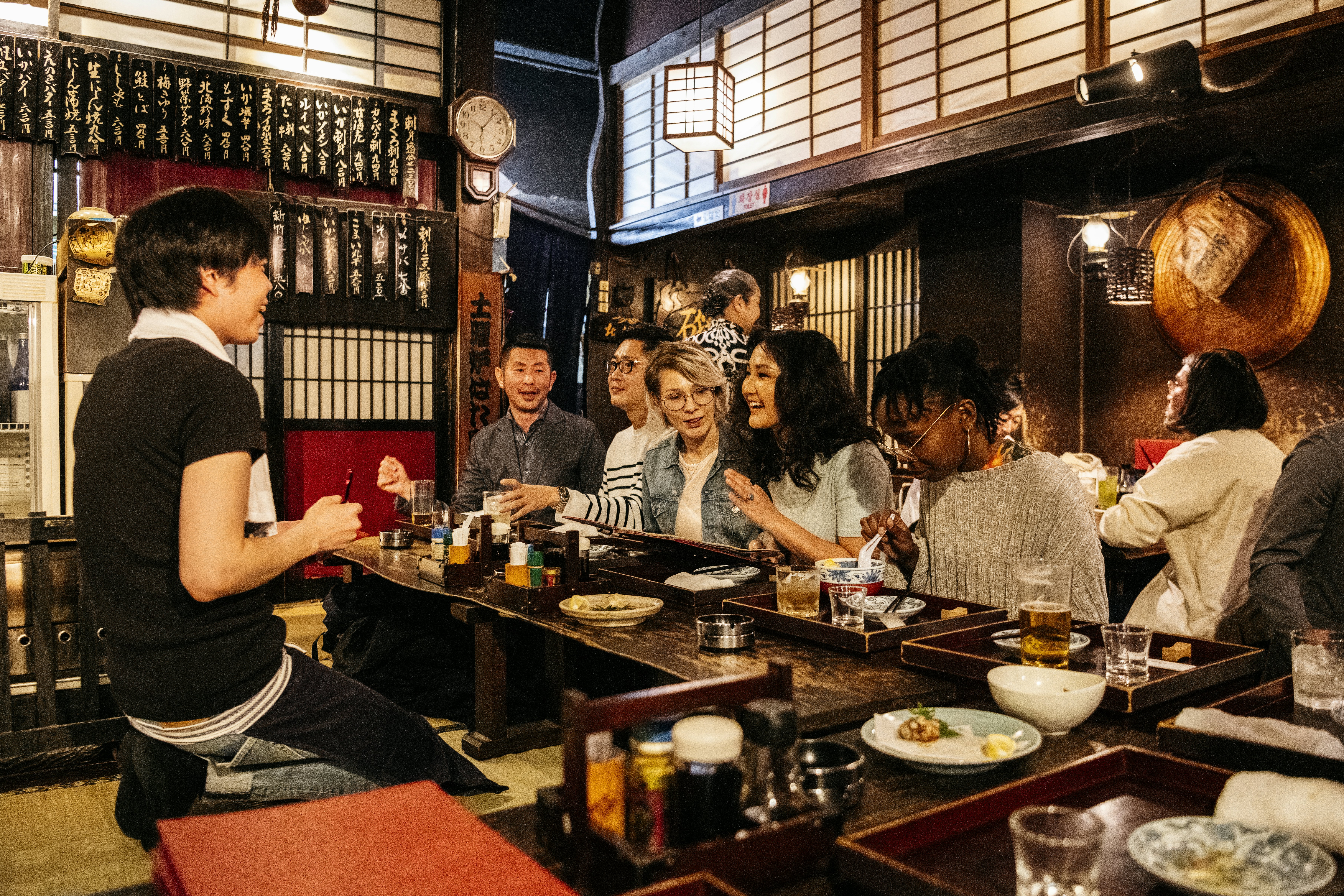
Restaurant etiquette
When you enter a restaurant in Japan, the staff will likely all greet you with a hearty "Irasshai!" (Welcome!). In all but the most casual places, where you seat yourself, the waitstaff will next ask you "Nan-mei sama?" (How many people?). Indicate the answer with your fingers, which is what the Japanese do. You may also be asked if you would like to sit at a zashiki (low table on the tatami), at a tēburu (table) or the kauntā (counter). Once seated you will be given an oshibori (hot towel), a cup of tea or water (this is free) and a menu.

In many high-end and sushi restaurants, there are generally two ways to order: omakase (chef’s choice) and okonomi (your choice). It’s common for high-end restaurants to offer nothing but omakase – the equivalent of a chef’s tasting course – usually two or three options of different value. (Pricier doesn’t necessarily mean more food; it often means more luxurious ingredients.) Most other restaurants will hand you a menu and expect you to choose what you like. If there’s no English menu (and you’re game), you can ask for the server’s recommendation "O-susume wa nan desu ka?" and give the okay to whatever they suggest.

When your food arrives, it’s the custom to say "Itadakimasu" (literally "I will receive" but closer to "bon appétit" in meaning) before digging in. All but the most extreme type-A chefs will say they’d rather have foreign visitors enjoy their meal than agonize over getting the etiquette right. Still, there’s nothing that makes a Japanese sushi chef grimace more than out-of-towners who over-season their food – a little soy sauce and wasabi go a long way.
Often a bill is placed discreetly on your table after your food has been delivered. If not, catch your server’s eye with a "sumimasen" (excuse me) and ask for the check by saying, "o-kaikei onegaishimasu". Payment, even at high-end places, is often settled at a counter near the entrance, rather than at the table. On your way out, it’s polite to say "Gochisō-sama deshita" to the staff (literally "It was a feast"; a respectful way of saying you enjoyed the meal).

Eating etiquette
If you only remember one thing, make it this: do not stick your chopsticks upright in a bowl of rice or pass food from one pair of chopsticks to another – both are reminiscent of Japanese funeral rites. But there are other lessons to learn. When serving yourself from a shared dish, it’s polite to use the back end of your chopsticks (i.e. not the end that goes into your mouth) to place the food on your own small dish. Lunch is one of Japan’s great bargains; however, restaurants can only offer cheap lunch deals because they anticipate high turnover. Spending too long sipping coffee after finishing your meal might earn you dagger eyes from the kitchen.

It’s perfectly OK, even expected, to slurp your noodles. They should be eaten at whip speed, before they go soggy (letting them do so would be an affront to the chef); that’s why you’ll hear diners slurping, sucking in air to cool their mouths. Eating and walking at the same time is considered impolite in Japan, as it goes against the etiquette of "ikkai ichi dousa" – which loosely translates as doing "one thing at a time". Finish your onigiri while standing out the front of the convenience store or find somewhere to sit down to eat your bento, otherwise you might elicit some stares of disapproval.
You might also like:
Do you need a visa to go to Japan?
The best time to go to Japan
10 best places to visit in Japan







